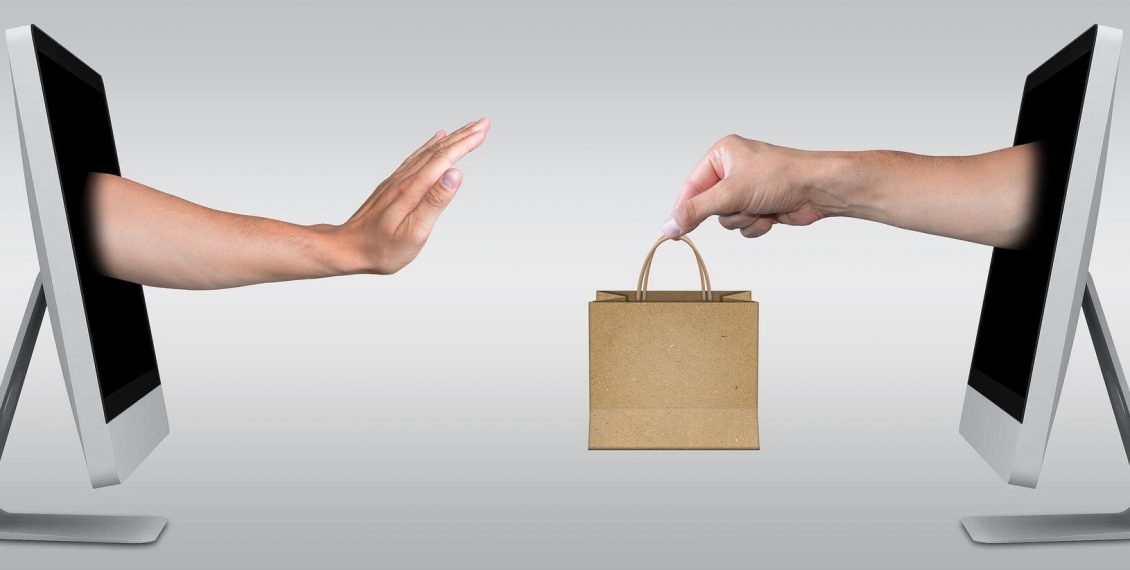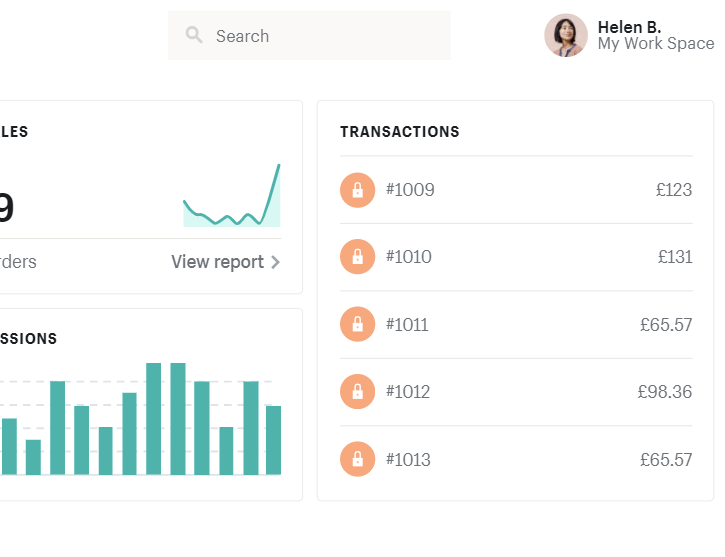BigCommerce vs Shopify: The Big Two Go Head To Head, But Which Is Best For Your Business?
By Rodney Laws | Ecommerce
By Rodney Laws | Ecommerce

Competition is the beating heart of ecommerce. It keeps stores evolving, vendors creative and products arriving on customers’ doorsteps.
Competition isn’t confined to opposing stores though. All across the world, first-time store owners are making their choice of ecommerce platform. But how do you decide which is best?
In this guide, we’ll put two heavy hitters of the ecommerce sphere up against each other to see which one comes out on top.
BigCommerce vs Shopify: which is the most powerful, most adaptable and premium choice for your online store?
With 90,000 stores in 65 countries worldwide, it’s hard to understate the popularity of BigCommerce.
Since its founding in 2009, BigCommerce has offered users full autonomy over their own professional online stores, empowering them to add unique products, craft excellent content and process orders all by themselves.
The flexible BigCommerce is one of the most popular store builders on the market for both first-time business owners and experienced sellers. There are perfect plans for small to midsize businesses and large, high-volume operations. For a safe, efficient and enjoyable online selling experience, BigCommerce is hard to beat.
Read our full review of BigCommerce here.
Shopify might be the bigger name of the two, but it ultimately doesn’t differ too much from BigCommerce.
It also offers users the tools to build an industry-leading online store and even manage in-person sales through the Shopify POS service.
For over ten years Shopify has been the industry standard, becoming almost synonymous with the process of launching your own store as a side hustle.
In recent years, Shopify has focused on integration with other platforms, defining itself as a hub for all things ecommerce. Their blog and design options make them a versatile platform perfect for a number of industries.
Read our full review of Shopify here.
In this guide, we will compare Shopify vs BigCommerce in more in-depth. However, we’ve created the comparison table below if you want a quick overview of the major positives and negatives of each ecommerce platform:
| BigCommerce | Shopify | |
| Positives | Brilliant built-in sales features. No installation needed. | A quality app store full of thousands of useful tools |
| No transaction fees included in any plans | Easy-to-navigate dashboard | |
| Up to 600 variants per product | Unique themes make it easy to incorporate professional designs | |
| Negatives | Advanced features less intuitive | Limited international scalability |
| Store themes lack variety | Transaction fees unless users are using Shopify Payments function | |
| Limited customisation in features | Further investment needed to get the most out of templates and apps |
If you want to find out which is better: Shopify or BigCommerce, then finding out more about the features of both will help you understand the differences between these seemingly similar sites. Let’s take a more in-depth look at some of the features on offer from both platforms.
The best ecommerce platforms are always user-friendly, and Shopify and BigCommerce certainly fit the bill.
Both feature excellent and easy to use content management systems, modern dashboards and straightforward editing functionality.
However, Shopify is a platform focused on appealing to brand new users, while BigCommerce is one more concerned with helping them grow on the platform.
Adding products is relatively easy on both platforms, with Shopify opting for a ‘form’ process each time a user uploads a new product.
BigCommerce, on the other hand, requires a bit more of a learning curve, with a detailed list of features to add to a product page on the left-hand side bar. This pays off after a little experimentation but isn’t ideal for someone looking to get their store up and running quickly.
There is a recognisable disparity between the number of product options and variants on offer. Shopify supports up to three drop-down menu options per product with an option for up to, while BigCommerce merchants are far less limited.

Image BigCommerce
Shopify has long been recognised for its brilliant design flexibility. However, BigCommerce may have outclassed it with recent updates.
An intuitive drag-and-drop builder means design elements can now be added, removed and altered with ease. This is extremely accessible, especially in contrast to Shopify’s (now somewhat outdated) functionality of switching page elements from a list.
This drag and drop function is significantly more appealing to a generation of new store owners familiar with similar features.
The basic functions of Shopify are much more intuitive than BigCommerce. However, BigCommerce is undeniably more powerful and with similar developments to the drag-and-drop function, could soon outclass Shopify.
Both BigCommerce and Shopify have been accused of being ‘small business’ platforms.
Critics bemoan their lack of organic scalability, suggesting there is only so far you can take a business with a regular Shopify or BigCommerce plan — pushing users towards premium plans (as we’ll touch upon later).
That’s not necessarily true though. As huge success stories on each platform such as SkullCandy (BigCommerce) and GymShark (Shopify) show, both platforms offer great scalability potential for growing brands.
Their regular payment plans all include — or provide access to — SEO and digital marketing features out-of-the-box, giving users the tools they need to quickly expand their enterprise online. Should business owners want to take things a step further, premium plans include access to advanced tools and APIs, including:
However, the presence of credit card fees on both platforms does highlight some potential scalability challenges.
In addition to transaction fees (covered in our ‘Price’ section), there are credit card fees to consider. These are charged by the company providing the payment gateway software that processes your customer’s payments.
Should you want to expand and offer more diverse payment options, you will have to accept saying goodbye to a small percentage of the fee.
Shopify offers ‘Shopify Payments’ as an out-of-the-box payment processor, offering varying credit card charges whether you’re selling online or in person.
BigCommerce has the slightly cheaper and more familiar option of processing its card payments through PayPal. This generally charges a cheaper rate than Shopify, particularly for larger business owners with high volumes of sales.
Should you want to take your store out into the real world and start selling in person, both stores have access to POS apps to turn your website into a pop-up store overnight. Shopify produces their own celebrated POS system, while BigCommerce gives you access to a number of third-party apps.
One again, this is another instance in which the two platforms are very close, although BigCommerce does edge it slightly on fees.

Image Unsplash
On top of all the excellent features and room for scalability, it’s important to know you have comprehensive customer support backing your purchase.
Price and ease of use are essential points when comparing platforms, but what happens when the basic functionality of your store breaks or you’re struggling to implement a new feature?
BigCommerce and Shopify share a lot of similarities when it comes to customer support, including:
BigCommerce will try and point you to FAQ, form and DIY solutions before speaking to you directly, although they do offer a “skip this step” option when you require additional support.
Likewise, Shopify also offers 24/7 support alongside DIY solutions to solve the issue in your own time.
Where Shopify does falter is in international support. If you aren’t on their list of countries supported by phone, it can be difficult to get in touch with them. However, when you do get in contact, customer support is generally quick and excellent.
If you’re trying to decide whether you should use Shopify or BigCommerce, looking at the key benefits of each will help. Let’s take a look at the main benefits of both BigCommerce and Shopify.

Image Shopify
As you can see, many of each store’s primary benefits are quite similar. However, the stark differences are how BigCommerce offers more selling options while Shopify opens you up to a wide community of app and theme creators to give your website a more personal feel.
Depending on the avenue you want to take your store down, these key features will have a significant impact on your choice.
Now let’s compare the pricing options for both platforms.
| Platform | Basic pricing plan | Medium pricing plan | Advanced pricing plan |
| BigCommerce | $29.95 | $79.95 | $299.95 |
| Shopify | $29 | $79 | $299 |
As you can see, BigCommerce and Shopify pricing plans are very similar.
There are also tailed solutions BigCommerce Enterprise and Shopify Plus, which larger businesses can take advantage of.
Both platforms offer a discount of 10% per month when you opt to pay annually rather than per month.
Shopify actually offers a super cheap, Shopify Lite option for just $9 a month, which allows users to embed a Shopify button onto their existing website — essentially powering it with Shopify sales functionality.
While on the surface these two seem very similar, everything changes when transaction fees come into play.
This is the percentage the platform will take from each sale made. Here’s the basic data:
As mentioned earlier, Shopify fees can be avoided through the use of Shopify Payments. However, many store owners will prefer to use third-party processors such as PayPal.
Want to experiment with these platforms on a tight budget? Thankfully, both offer free trials. BigCommerce has a 15-day trial, while Shopify offers a 14-day one.
When you consider additional costs such as apps and transaction fees, BigCommerce is actually much better value for money. There will be some users willing to shell out that little bit extra for the Shopify brand and the familiarity it offers though.
Both BigCommerce and Shopify provide comprehensive guides for migrating your existing site onto the platforms:
Want to make the move from BigCommerce to Shopify? The Shopify support website includes a comprehensive overview of everything you need to know about how to migrate to Shopify from whichever platform you’re currently using.
Shopify has provided a step-by-step guide for site migration, from the very first step of exporting your product, customer, and order data from BigCommerce to any issues you may encounter along the way.
If you’re coming to BigCommerce from another ecommerce platform like Shopify, you should find site migration easy enough.
BigCommerce have even developed platform-specific catalog transfer apps — including for Shopify and Magento — that allow you to easily migrate all of your catalog data to your new BigCommerce store.
The BigCommerce support website includes a comprehensive overview of how to migrate from Shopify, including common scenarios, steps to take before you begin, and the migration itself. Plus, their support team is on hand for any further queries you might have.
The great news for prospective ecommerce store owners is that there is no clear winner between Bigcommerce and Shopify. That might not be the conclusive answer you were looking for, but both platforms make a great starting point and companion for your business growth journey.
While largely similar, here are some cases in which one platform outshines the other (if only marginally):
BigCommerce wins:
Shopify wins:
The devil is truly in the details when it comes to picking the right ecommerce platform. You might favour the flexibility of BigCommerce as your business grows, but start to miss the option of leaning on the user community Shopify boasts.
It’s important to do your own research and know what you’re willing to compromise on.
To avoid sitting on the fence though, we’ll go with Shopify. Not just because it’s the big name, but because the thriving community around it and easy-to-learn functionality makes it a great choice for seasoned store owners and beginners alike.